Originators of the subject
Carl Sagan

An American astrophysicist and astrobiologist, Carl Sagan was a prominent science popularizer and advocate of rational skepticism. He also wrote science fiction, the widely known of which is Contact, filmed in 1997. In a book coauthored with Iosiph Shklovskii, he was the first to consider seriously, even if briefly, the possibility that life on Earth might descend from deliberate seeding by an earlier extraterrestrial civilization. In fact, given that Sagan was a friend to Francis Crick and Leslie Orgel and that he was acknowledged in their paper on directed panspermia, he appears to be one of the originators of this hypothesis.
Francis Crick
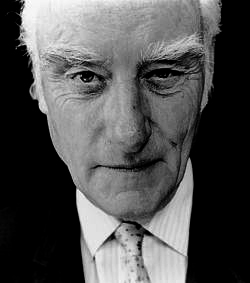 Francis Crick, a British physicist turned into biologist, was the key figure in the development of genetics and molecular biology. In 1953 he and Jim Watson published a very short but seminal paper in Nature where they unveiled the structure of DNA — the work for which they were awarded the Nobel Prize in 1962. Together with his friend and colleague Leslie Orgel, he was the first to publish, in 1973, an in-depth analysis of the possibility that life on Earth might derive from seeding by an earlier civilization. Their paper was published in Icarus, the journal whose editor at that time was Carl Sagan. In 1981 Crick wrote a general-audience book titled Life Itself: Its Origin and Nature, where he went even in more detail about the hypothesis.
Francis Crick, a British physicist turned into biologist, was the key figure in the development of genetics and molecular biology. In 1953 he and Jim Watson published a very short but seminal paper in Nature where they unveiled the structure of DNA — the work for which they were awarded the Nobel Prize in 1962. Together with his friend and colleague Leslie Orgel, he was the first to publish, in 1973, an in-depth analysis of the possibility that life on Earth might derive from seeding by an earlier civilization. Their paper was published in Icarus, the journal whose editor at that time was Carl Sagan. In 1981 Crick wrote a general-audience book titled Life Itself: Its Origin and Nature, where he went even in more detail about the hypothesis.
Leslie Orgel
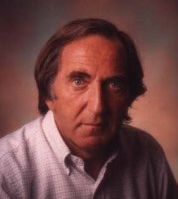 Leslie Orgel, originally from Britain, was a chemist known for his research in the field of the origins of life (and also for his second rule, which states that “evolution is cleverer than you are”). In particular, he greatly contributed to the RNA world hypothesis. Together with Francis Crick, he published the paper on directed panspermia in Icarus. Occasionally you may read that this was considered by some of his colleagues as a result of professional disenchantment, as there has been little progress in our understanding of life’s origin. This, however, is completely irrelevant, as the seeded-Earth hypothesis was not intended to represent an alternative to abiogenesis theories and to address the question of how life emerged in the first place at all.
Leslie Orgel, originally from Britain, was a chemist known for his research in the field of the origins of life (and also for his second rule, which states that “evolution is cleverer than you are”). In particular, he greatly contributed to the RNA world hypothesis. Together with Francis Crick, he published the paper on directed panspermia in Icarus. Occasionally you may read that this was considered by some of his colleagues as a result of professional disenchantment, as there has been little progress in our understanding of life’s origin. This, however, is completely irrelevant, as the seeded-Earth hypothesis was not intended to represent an alternative to abiogenesis theories and to address the question of how life emerged in the first place at all.
George Marx
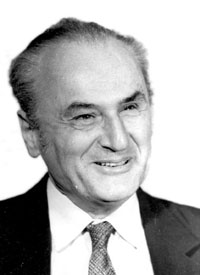 George (György) Marx was a Hungarian astrophysicist, particle physicist, and science educator, best known for the discovery of lepton number conservation and contributions to neutrino cosmology. He was also interested in SETI and astrobiology, and served, after Frank Drake (remember the Drake equation?), as the chairman of the Bioastronomy Commission of the International Astronomical Union (currently Commission F3 – Astrobiology). Building on the hypothesis of Crick and Orgel, Marx proposed in a 1979 paper published in Acta Astronautica that if life on Earth descends from seeding, we may expect to find a message intentionally inserted into genomes to be read by intelligent species that might evolve from the seeds (that’s us). But, admitting that DNA is a poor option in view of its high mutability, Marx noted that a better option might be the genetic code.
George (György) Marx was a Hungarian astrophysicist, particle physicist, and science educator, best known for the discovery of lepton number conservation and contributions to neutrino cosmology. He was also interested in SETI and astrobiology, and served, after Frank Drake (remember the Drake equation?), as the chairman of the Bioastronomy Commission of the International Astronomical Union (currently Commission F3 – Astrobiology). Building on the hypothesis of Crick and Orgel, Marx proposed in a 1979 paper published in Acta Astronautica that if life on Earth descends from seeding, we may expect to find a message intentionally inserted into genomes to be read by intelligent species that might evolve from the seeds (that’s us). But, admitting that DNA is a poor option in view of its high mutability, Marx noted that a better option might be the genetic code.
Unwitting contributors
George Gamow
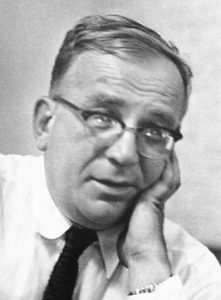
George Gamow, originally from Russia, was a theoretical physicist and cosmologist with a strong interest in genetics. He contributed to understanding of how chemical elements formed after the Big Bang, and predicted the existence of cosmic microwave background radiation as a relic of the Big Bang. He had a keen sense of humor, sometimes causing certain nuances with journal editors. He co-founded the RNA Tie Club, a “gentleman’s club” of 20 scientists, including Francis Crick and Leslie Orgel, with the aim to understand molecular mechanisms behind the genetic code, and he proposed some of the earliest models of the genetic code before it was cracked by biochemists in 1960s. None of his models won the game (with hindsight, no one’s model could win the game as the genetic code turned out to be unpredictable from physics, chemistry and even math). However, one of his models which had nothing to do with biochemistry but used abstract logic to sort codons in a straightforward manner, does the job in decoding the “message”: viewed through Gamow’s abstract sorting, the canonical genetic code displays some of the attributes of the informational artifact.
Yuri Rumer
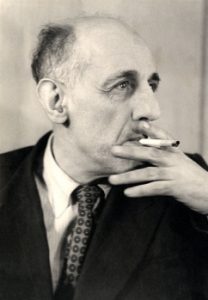 Yuriy Rumer was a Soviet theoretical physicist, working mostly in the field of quantum mechanics. He was a close friend of Lev Landau, an encyclopediacal physicist awarded the Nobel Prize in 1962. In 1938 Landau was arrested for pejorative statements about Stalin’s dictatorship, and Rumer was arrested as his accomplice, but both were rehabilitated afterwards. In 1960s Rumer became interested in genetics, and just a few months after the genetic code was cracked, he discovered an inherent orderliness within the code which relied, as in Gamow’s case, on pure logic rather than on physics and chemistry. In 1966 he published this result (in Russian) in the Proceedings of the Soviet Academy of Sciences. Quite interestingly, his finding was rediscovered and published later at least three times. Yet, traditional models of the code origin and evolution had little to say about this abstract orderliness. Meanwhile, Rumer’s finding is the first step in decoding the codogram – the major part of the informational artifact in the genetic code.
Yuriy Rumer was a Soviet theoretical physicist, working mostly in the field of quantum mechanics. He was a close friend of Lev Landau, an encyclopediacal physicist awarded the Nobel Prize in 1962. In 1938 Landau was arrested for pejorative statements about Stalin’s dictatorship, and Rumer was arrested as his accomplice, but both were rehabilitated afterwards. In 1960s Rumer became interested in genetics, and just a few months after the genetic code was cracked, he discovered an inherent orderliness within the code which relied, as in Gamow’s case, on pure logic rather than on physics and chemistry. In 1966 he published this result (in Russian) in the Proceedings of the Soviet Academy of Sciences. Quite interestingly, his finding was rediscovered and published later at least three times. Yet, traditional models of the code origin and evolution had little to say about this abstract orderliness. Meanwhile, Rumer’s finding is the first step in decoding the codogram – the major part of the informational artifact in the genetic code.